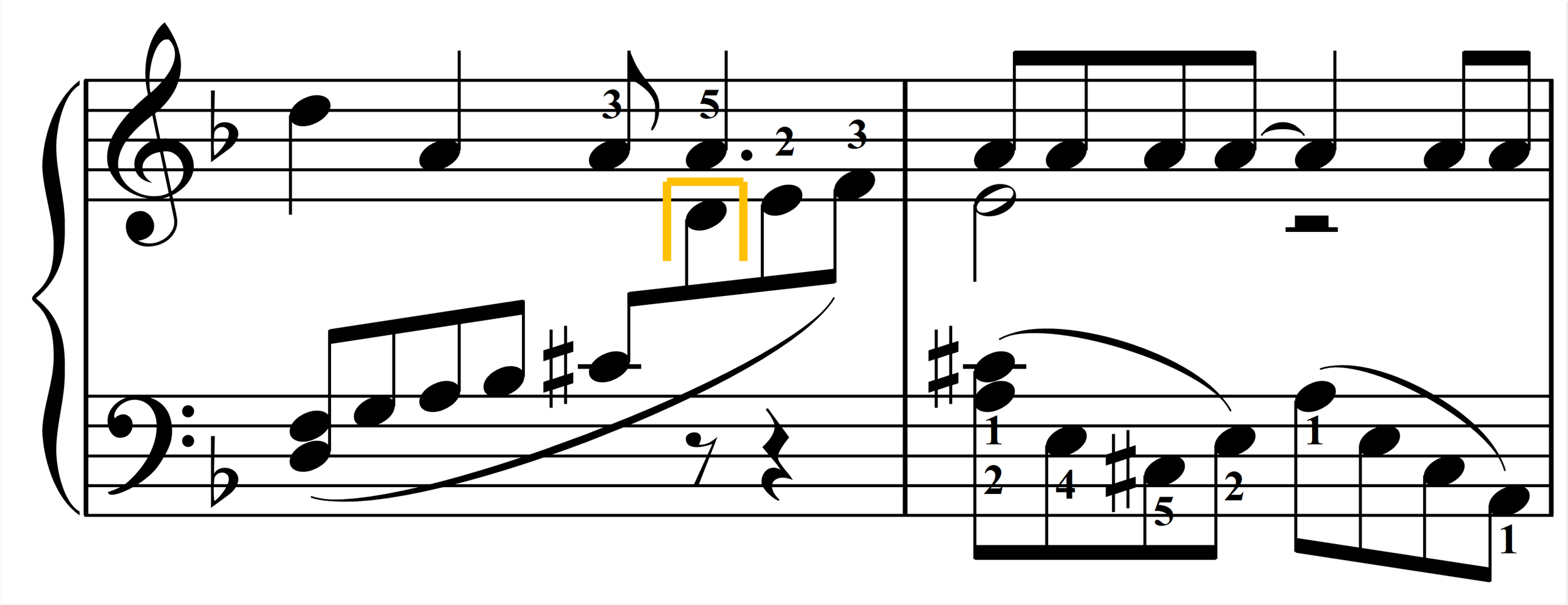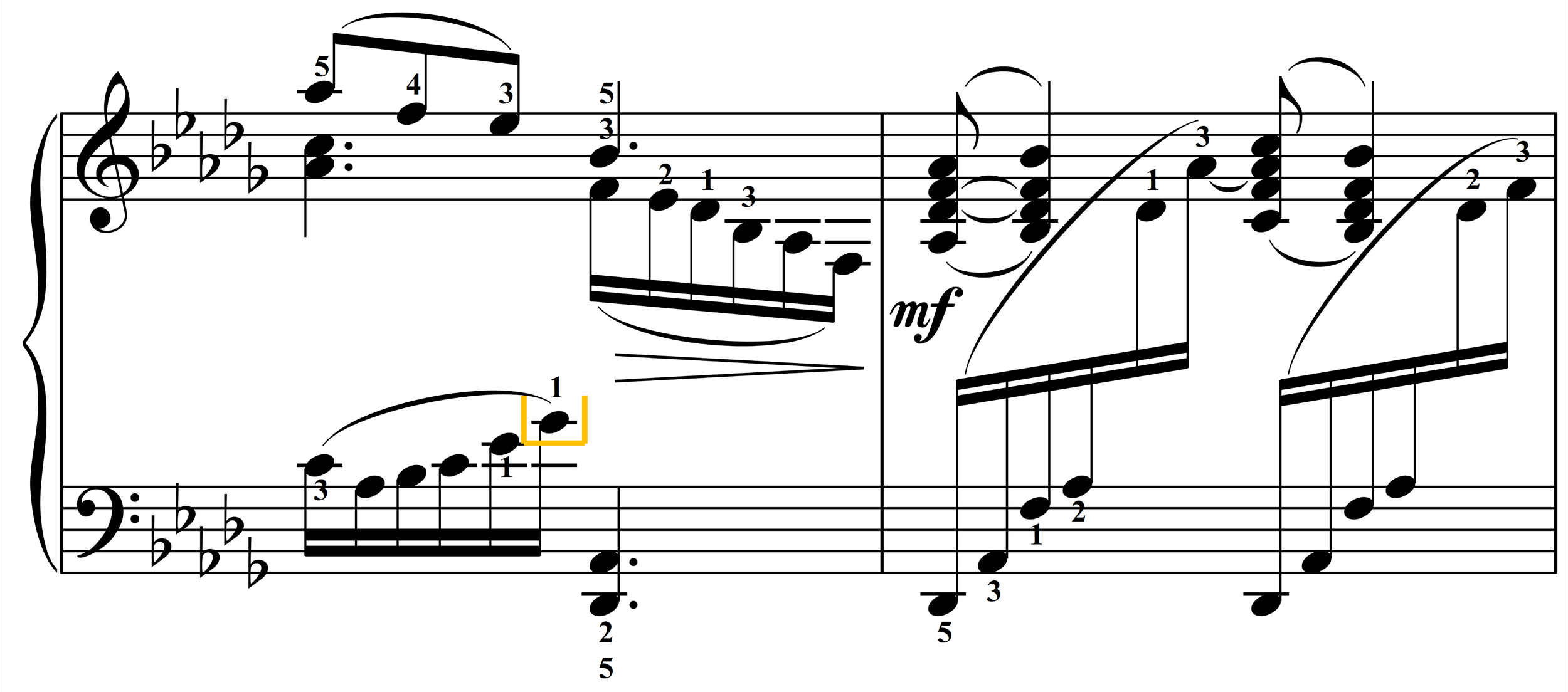“Splitting these inner voices between the hands allows facilitates smoother legato.”
Submitted by Michael Clark
Published on 9/2/2023

“Splitting these inner voices between the hands allows facilitates smoother legato.”
Submitted by Michael Clark
Published on 9/2/2023

“The alto C is within easy reach of the left hand, allowing the melody to be isolated for greater control of voicing.”
Submitted by Michael Clark
Published on 9/2/2023

“I take the lower C silently with my right hand thumb to faciliate a legato fingering for the G-A-G.”
Submitted by Michael Clark
Published on 9/2/2023

“The left hand can quite comfortably finish its scale on D, allowing the right hand to use a better fingering for the repeated note.”
Submitted by Michael Clark
Published on 9/5/2023

“I play the top note of the widely spaced chords with my right-hand thumb. I prefer to have all the notes sound simultaneously at this quick tempo.”
Submitted by Michael Clark
Published on 5/3/2023

“If I play the F with my right hand, I can sustain it for the entire measure, allowing me to change the pedal on beat three.”
Submitted by Michael Clark
Published on 9/5/2023

“I prefer to keep nearly all the triplets in the left hand for better projection and legato in the right-hand melody.”
Submitted by Michael Clark
Published on 9/7/2023

“I find this distribution of the inner voice to be the most effective in maintain legato and sustaining the bass note where appropriate.”
Submitted by Michael Clark
Published on 9/7/2023

“Taking the lower octave with the left hand allows the right hand to use a stronger and more legato fingering for the melody line.”
Submitted by Michael Clark
Published on 9/7/2023

Red = RH
Blue = LH
“I cross the left hand over the right in both m. 54 and m. 57, partly to reduce position shifts in the right hand and partly because it looks nice.”
Submitted by Michael Clark
Published on 9/7/2023

“Taking the lower voice of the some of the octaves in the left hand can improve accuracy and legato. Redividing the texture in m. 66 also alleviates the stretched position in the right hand.”
Submitted by Michael Clark
Published on 9/8/2023

“I find dividing the end of the scale between the hands helps with speed and looks nice.”
Submitted by Michael Clark
Published on 9/8/2023

“Dividing the notes in this way gives the right hand a little more time to cross over.”
Submitted by Michael Clark
Published on 10/15/2023

“Taking an extra note in the right hand keeps the left hand in a more compact position.”
Submitted by Michael Clark
Published on 10/15/2023

“Taking the B in the left hand in mm. 124 and 126 keeps the right hand in a more compact position. This redistribution for the final line eliminates the extreme crowding of Price’s distribution. The two-note slurs can still be observed with this fingering.”
Submitted by Michael Clark
Publishe on 10/15/2023

“The G-flat can be taken by the right hand to allow the left hand more time to move to its new position.”
Submitted by Michael Clark
Published on 9/7/2023

“Taking the final sixteenth of m. 16 into the left hand gives the right hand more time to shift to its next position.”
Submitted by Michael Clark
Published on 9/7/2023

“I prefer to the let the right hand manage the first part of this arpeggio.”
Submitted by Michael Clark
Published on 9/7/2023